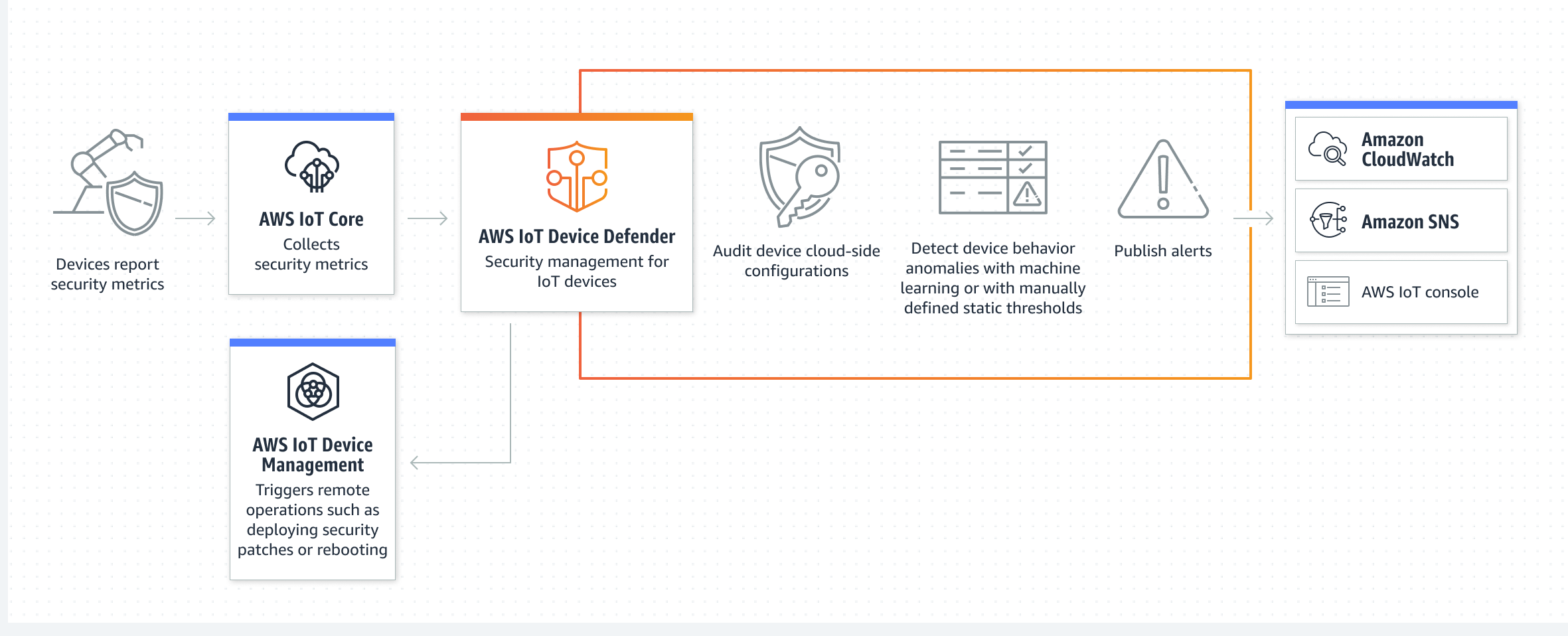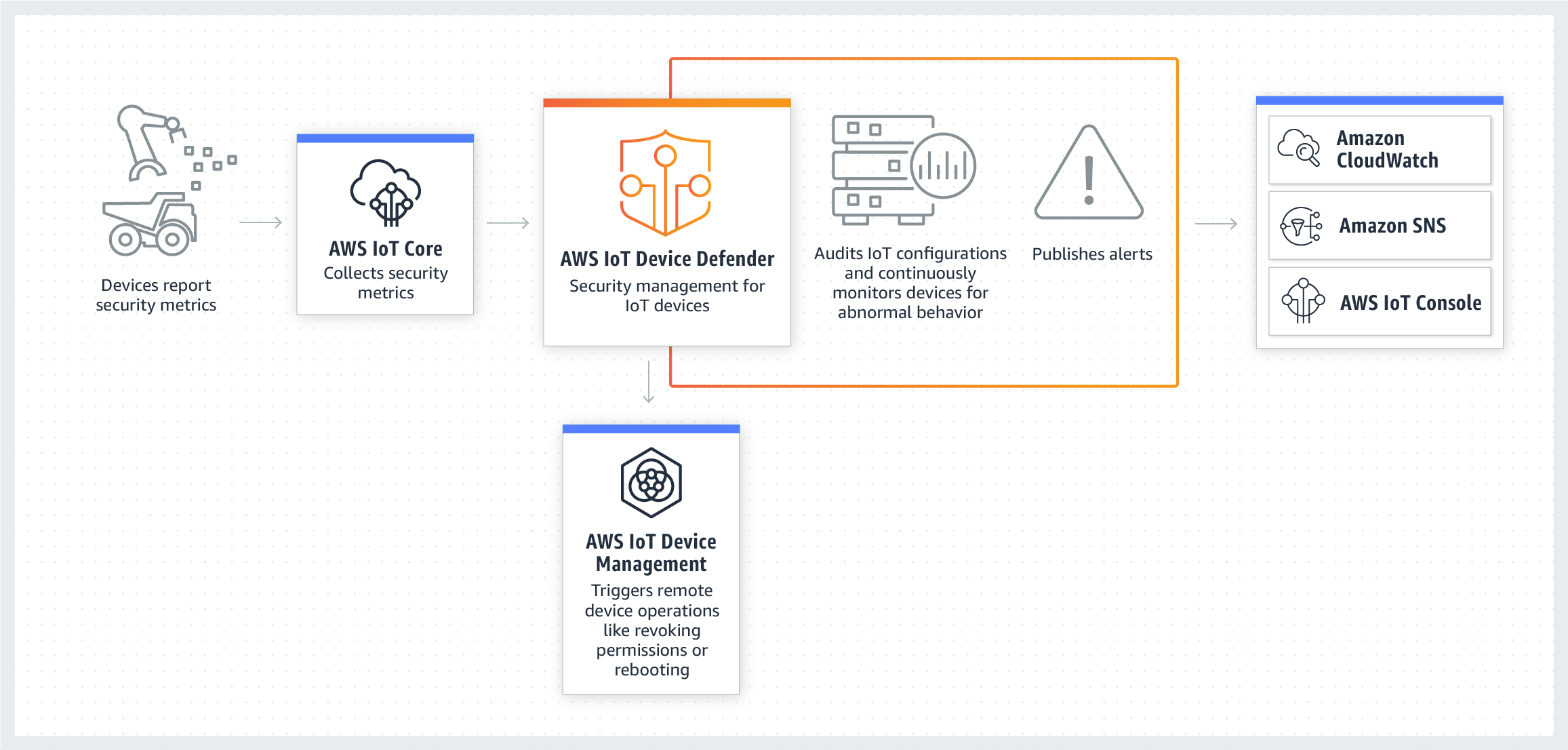Access IoT Device Behind Firewall AWS: The Ultimate Guide For Every Techie
Have you ever wondered how to access IoT devices behind a firewall using AWS? This is one of the most common challenges faced by developers and network administrators in today's connected world. Imagine setting up smart devices in a secure corporate environment, only to realize that your firewall is blocking access to the outside world. Sounds frustrating, right? Well, don’t worry because this guide has got you covered. We’ll dive deep into the nitty-gritty of securing and accessing IoT devices while ensuring everything stays within AWS best practices.
Let’s be honest here—IoT devices are everywhere. From smart thermostats to industrial sensors, these gadgets are revolutionizing the way we interact with technology. But when it comes to accessing them securely, especially behind firewalls, things can get a little tricky. That’s where AWS steps in with its powerful tools and services designed to make life easier for tech enthusiasts like us.
In this article, we’ll break down the entire process step-by-step so you can confidently navigate through firewalls without compromising security. Whether you're a seasoned pro or just starting out, this guide will provide valuable insights and practical solutions to help you achieve your goals. So grab your favorite drink, sit back, and let’s get started!
Read also:Czech Wives A Journey Beyond The Stereotypes
Table of Contents:
- Introduction to Accessing IoT Devices Behind Firewalls
- Understanding AWS IoT Core
- Common Challenges with Firewalls
- Security Best Practices for IoT Devices
- Using VPC Endpoints for Secure Communication
- Setting Up IoT Devices Behind Firewalls
- Exploring VPN Solutions
- Leveraging API Gateway for Controlled Access
- Troubleshooting Tips and Tricks
- Conclusion: Wrapping It All Up
Introduction to Accessing IoT Devices Behind Firewalls
Before we jump into the technical details, let’s take a moment to understand why accessing IoT devices behind firewalls is such a big deal. Firewalls are designed to protect networks from unauthorized access, which is great for security but can sometimes cause headaches when you need to connect devices to external services. AWS offers a range of solutions to address this issue, making it easier than ever to manage IoT devices securely.
When you think about IoT devices, you’re probably imagining gadgets that need to communicate with cloud services to function properly. But what happens when those devices are locked behind a corporate firewall? That’s where AWS IoT Core comes in, providing a secure and scalable platform for managing IoT devices.
In this section, we’ll explore the basics of firewalls, how they impact IoT devices, and why AWS is the perfect solution for overcoming these challenges. So whether you’re dealing with a small home network or a large enterprise environment, this guide will give you the tools you need to succeed.
Understanding AWS IoT Core
AWS IoT Core is the backbone of AWS’s IoT ecosystem, offering a fully managed service that allows connected devices to interact with cloud applications and other devices securely. It’s like having a personal assistant for your IoT devices, handling all the heavy lifting so you don’t have to.
Key Features of AWS IoT Core
- Device Management: Easily register, organize, and monitor IoT devices from a centralized dashboard.
- Secure Communication: Use end-to-end encryption to ensure data remains protected during transmission.
- Scalability: Handle millions of devices and messages without breaking a sweat.
- Integration: Seamlessly integrate with other AWS services for a comprehensive solution.
By leveraging AWS IoT Core, you can focus on building innovative solutions without worrying about the underlying infrastructure. Plus, with built-in security features, you can rest assured that your devices are protected from potential threats.
Read also:Jesse Spencer The Rising Star Who Stole Hearts In Hollywood
Common Challenges with Firewalls
Firewalls are essential for maintaining network security, but they can also create obstacles when trying to access IoT devices. Some of the most common challenges include:
- Port Restrictions: Many firewalls block specific ports required by IoT devices to communicate with external services.
- IP Whitelisting: Ensuring that only authorized IP addresses can access your devices can be a complex task.
- Latency Issues: Firewalls can introduce delays in communication, affecting the performance of IoT devices.
Thankfully, AWS provides several tools and techniques to overcome these challenges, allowing you to maintain a secure and efficient connection to your IoT devices.
Security Best Practices for IoT Devices
Security should always be a top priority when working with IoT devices. Here are some best practices to keep in mind:
- Use Strong Authentication: Implement multi-factor authentication to ensure only authorized users can access your devices.
- Encrypt Data: Protect sensitive information by encrypting data both in transit and at rest.
- Regular Updates: Keep your devices and software up to date with the latest security patches.
- Monitor Activity: Continuously monitor your devices for suspicious activity and respond quickly to potential threats.
By following these guidelines, you can significantly reduce the risk of security breaches and ensure your IoT devices remain safe and secure.
Using VPC Endpoints for Secure Communication
AWS Virtual Private Cloud (VPC) endpoints are a powerful tool for enabling secure communication between IoT devices and AWS services without exposing them to the public internet. Think of VPC endpoints as a private tunnel that allows your devices to communicate with AWS services while remaining hidden from external threats.
Benefits of Using VPC Endpoints
- Enhanced Security: Prevent unauthorized access to your devices by keeping them within a private network.
- Improved Performance: Reduce latency by avoiding public internet routes.
- Cost Savings: Eliminate the need for additional hardware or software solutions.
Setting up VPC endpoints is straightforward and can be done through the AWS Management Console or AWS CLI. Once configured, your IoT devices can communicate securely with AWS services without any additional configuration.
Setting Up IoT Devices Behind Firewalls
Now that we’ve covered the basics, let’s dive into the actual process of setting up IoT devices behind firewalls. Here’s a step-by-step guide to help you get started:
- Configure Your Firewall: Allow traffic to the necessary AWS endpoints and ports.
- Register Your Devices: Use AWS IoT Core to register and manage your devices.
- Set Up Authentication: Implement X.509 certificates or AWS IoT Device Defender for secure authentication.
- Test Your Setup: Verify that your devices can communicate with AWS services without any issues.
Remember, every network is different, so you may need to adjust these steps based on your specific environment. But with AWS’s flexibility and scalability, you should be able to find a solution that works for you.
Exploring VPN Solutions
Another option for accessing IoT devices behind firewalls is to use a Virtual Private Network (VPN). A VPN creates a secure tunnel between your devices and the AWS cloud, allowing them to communicate as if they were on the same network.
Types of VPNs
- Site-to-Site VPN: Connects two networks together, ideal for enterprise environments.
- Client-to-Site VPN: Allows individual devices to connect to a network securely.
While VPNs can be a great solution for some use cases, they do come with their own set of challenges, such as increased latency and maintenance requirements. Be sure to weigh the pros and cons before deciding if a VPN is the right choice for your setup.
Leveraging API Gateway for Controlled Access
AWS API Gateway is another powerful tool for managing access to IoT devices behind firewalls. By creating custom APIs, you can control exactly who and what can interact with your devices, ensuring that only authorized requests are processed.
Advantages of Using API Gateway
- Fine-Grained Control: Define specific permissions for each API endpoint.
- Monitoring and Analytics: Track usage and performance metrics in real-time.
- Scalability: Handle high volumes of traffic without compromising performance.
With API Gateway, you can create a secure and efficient interface for interacting with your IoT devices, giving you peace of mind knowing that everything is under control.
Troubleshooting Tips and Tricks
Even with the best planning, issues can still arise when working with IoT devices behind firewalls. Here are some tips to help you troubleshoot common problems:
- Check Firewall Rules: Ensure that all necessary ports and IP addresses are allowed.
- Verify Device Configuration: Double-check that your devices are properly registered and authenticated.
- Monitor Logs: Use AWS CloudWatch to identify and resolve issues quickly.
By staying proactive and addressing issues as they arise, you can minimize downtime and keep your IoT devices running smoothly.
Conclusion: Wrapping It All Up
Accessing IoT devices behind firewalls using AWS doesn’t have to be a daunting task. With the right tools and techniques, you can securely connect your devices to the cloud and unlock their full potential. From AWS IoT Core to VPC endpoints and API Gateway, AWS offers a wide range of solutions to meet your needs.
So what are you waiting for? Start exploring these powerful tools today and take your IoT projects to the next level. And don’t forget to share your experiences and tips with the community—after all, we’re all in this together!
Thanks for reading, and happy coding!



